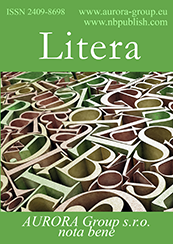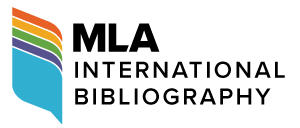Question at hand
Reference:
Guo , C. (2021). Project study of transformations in the works of F. Kafka and M. A. Bulgakov (“The Metamorphosis” and “Heart of a Dog”). Litera, 7, 1–11. https://doi.org/10.25136/2409-8698.2021.7.35794
Abstract:
The subject of this research is the literary works of F. Kafka “The Metamorphosis” and M. A. Bulgakov “Heart of a Dog”. The object of this research is the metaphor of transformation in the aforementioned novels. The article employs comparative, analytical, and descriptive methods. The methodological framework is comprised of the works of Russian and Chinese scholars. The study is founded on the compilation of research experience of such Chinese authors as Liang Kun, Wen Wenwen, Zhao Lijun, and Zhang Meng), and determines the peculiarities of transformations in the works of F. Kafka and M. A. Bulgakov from the perspective of project study. Practical importance of this research lies in application of the acquired results for creating various methodological textbooks, including cross-cultural direction, for the purpose of bringing Chinese and Russian people together, improving communication, and studying Russian (or Chinese) language on the example of classical literature and analysis of the literary works by Chinese researchers. This work is also valuable for the linguists, as it enriches the knowledge in the area of foreign language research and creation of literary works. The conclusion is made that the use of the metaphor of transformations in the novels “Heart of a Dog” and “The Metamorphosis” answer the social questions faced by Kafka and Bulgakov. Although, it is important to underline the differences in the use of this metaphor as a literary technique. The transformation is associated with the personality of the protagonist. Despite the different social origin of the writers, their works resemble a concern on the social status of a person, and describe emotional torments and life difficulties of the ordinary people. The work aims to broaden the theoretical framework of the research by synthesizing the results of analytics of the selected literary works, as well profound analysis towards seeking the additional meanings of transformation in the novels of F. Kafka and M. Bulgakov in “The Metamorphosis” and “Heart of a Dog”.
Keywords:
Russian literature, personality, culture, social problems, transformation, expressionism, modernism, Franz Kafka, french literature, Bulgakov
Interpretation
Reference:
Sangadieva, E.G. (2021). Ethnographic and mythopoetic space of the novel “Big Argish” by Mikhail Osharov . Litera, 7, 12–21. https://doi.org/10.25136/2409-8698.2021.7.35920
Abstract:
The problem of studying the traditional cultures of the peoples of Russia is relevant in the modern social science and humanities research. A significant role in this process is played by literature that reveals the peculiarities of ethnopoetics, worldview, and perception of the world. In fiction writing, the ethnic specificities are reflected in depiction in the natural world, everyday life, mentality, as well ethnographic features of lifestyle of a certain community. Based on the novel by Mikhail Osharov (1894-1937), the article examines the ethnographic peculiarities of depicting the world and man. Analysis is conducted on images of the characters through the specificity of their ethnopsychological consciousness and traditional worldview. The research employs semantic and axiological methods. The scientific novelty consists in the analysis of the national concept of the world through ethnographic peculiarities of depicting literary mages in the novel “Big Argish” by Mikhail Osharov. The novel was written in the Russian language, describing the unique culture, traditions and customs of the Evenki people of the early 1930s. During the political repressions, Mikhail Osharov was shot, and his artistic heritage was eliminated from the sociocultural space of the Soviet literature and literary studies. In the context of returning the names and heritage of the repressed writers, develops a new perspective of the literary works. In his novel, Mikhail Osharov preserved the peculiarities of traditional culture and everyday life of the Evenki people of the early XX century.
Keywords:
nimatchina, argish, folklorism, conception of the world, worldview, national culture, ethnopoetic, value, mode of life, evenks
Linguistics
Reference:
Fedorova, N.V., Dudukalov, E.V. (2021). Translation of the realias of state-administrative structure and public life from English language into the Russian language . Litera, 7, 22–36. https://doi.org/10.25136/2409-8698.2021.7.29704
Abstract:
This article provides an overview of the Russian and foreign classifications of realias, and the results of research conducted by the authors on the ways of conveying the realias of state-administrative structure and public life from the English language into the Russian language (based on the novel "Rebecca" by Daphne Du Maurier and its translation into the Russian language by G. Ostrovskaya). The goal of this is to determine the peculiarities and most effective ways of conveying the realias in the literary work, considering the specificity of literary translation, which requires preserving the flair, imagery, and aesthetic impact the original. The article employs the method of continuous sampling, quantitative estimation, linguistic observation and description, and comparative method. The conducted research contributes to studying the effectiveness of different ways of translating the realias in a literary text from the English language into the Russian language. The novelty of consist in the fact that this article is first to examine the language material and translation solutions from two perspectives – the theory of linguistic translation and the theory of interpretative translation. The conclusion is made that in conveying the realias, in some instances, the translator shifts away from the standard ways in order to make the text comprehensible for the Russian-speaking recipient. At the same time, this is the why the methods justified from the standpoint of linguistic theory of translation leads to a loss of flair and semantic nuances. The acquired materials and results can be valuable for pedagogical and educational purposes, as well as in professional English – Russian translations that contain non-equivalent vocabulary.
Keywords:
equivalent, translation theory, interpretation, translation, classification of realities, social life, public administration, realities, literary text, the English Language
Linguistics
Reference:
Keler, A.I. (2021). Category of composition in the prayer text. Litera, 7, 37–46. https://doi.org/10.25136/2409-8698.2021.7.36019
Abstract:
In linguistics at the turn of the XX-XXI centuries, the religious functional style is actively studied, which became possible as a result of changes in the socio-political situation in Russia. The subject of the study is the language of religious communication, individual religious genres, and the style system. The purpose of this work is to describe the compositional structure of previously unexplored prayers and to develop a basis for their classification. The subject of the study is the compositional structure of prayer as a genre of religious style. The research material was 120 texts of prayers of New Apostolic Christians created in a non-liturgical situation of communication. The specifics of creating prayers in this religious community is that the texts are created anew each time, while the canonical prayer "Our Father" is a model, which corresponds to the constructive principle of religious style — proto-textuality. By the method of categorical-textual analysis, it was found that each of the created prayers has a compositional structure containing in the main part from one to three compositional blocks correlated with the three main intentions of prayer — request, gratitude, praise. The study proposes to classify prayers based on the number of intentions included in the text and identifies mono-, bi- and polyintentional compositional structures of prayer texts. During the analysis of the texts, it was found that the main compositional structure found in the texts of the New Apostolic Christians is a biintentional structure containing the intentions of gratitude and requests in a strictly fixed sequence. The results of the work can be applied for further research of prayer texts in both liturgical and non-liturgical situations of communication.
Keywords:
New Apostolic Church, composition block, functional style, religious style, genre, prayer, prototextuality, composition category, compositional structure, intention
Linguistics
Reference:
Anikyan, T. (2021). Expressive means of prosody in the address “On the State of the Country” (on the material of the speech given by Barack Obama in 2014) . Litera, 7, 47–53. https://doi.org/10.25136/2409-8698.2021.7.36088
Abstract:
This article examines the expressive potential of prosodic means based on the 2014 State of the Union Address to Congress delivered by the President of the United States Barack Obama “On the State of the Country”. Special attention is given to the discursive characteristics of the text and the peculiarities of communicative situation, including such prosodic parameters as pausation, tone and intensity, word accents, as well as capabilities of the syllabic consonants. The author employs auditive and instrumental methods for the analysis of speech fragments of the politician, which illustrates the effectiveness of modifications of suprasegmental speech characteristics for achieving the optimal rhetorical effect in the information-enriched text. The relevance of this research is defined by need for comprehensive analysis of the political discourse and techniques used to influence the audience. The scientific novelty lies in consideration of the expressive capabilities of prosodic means in the political texts with consideration of various extralinguistic factors, as well as within the specific type of political discourse – orientation genre as a speech of information-prescriptive nature. The acquired results demonstrate the expressive potential of suprasegmental means in oral speech, and can be implemented in teaching students-philologists the principles of analysis of political texts from the perspective of expressive syntax, prosody, cognitive syllabics, and rhetoric.
Keywords:
pausation, pitch movement, prosody, State of the Union, orientation genre, political discourse, accent, tempo, loudness, rhythm
Literary criticism
Reference:
Yashina, K.I. (2021). The image of Bolshoye Boldino in the Russian literature: peculiarities of local text formation. Litera, 7, 54–63. https://doi.org/10.25136/2409-8698.2021.7.33656
Abstract:
The subject of this research is Bolshoye Boldino as the landmark of the Russian culture. The goal is to give characteristics to the image of Bolshoye Boldino established in the Russian literature, as well as analyze the possibility of formation of the local text. It is proven that constant traits of Boldino, such as solitude, isolation from the big world, simplicity of life, and vagueness of time boundaries, were formed based on the letters, works, and events in the life of A. S. Pushkin, and later comprehended by other authors. It is noted that the collection of texts about Bolshoye Boldino consists of the saying and interviews, fiction and folklore compositions. The research material includes the poems and an saying M. S. Petrovyh, Y. V. Drunina, D. S. Samoilov and B. A. Akhmadulina. The conclusion is made that in the Russian culture, Bolshoye Boldino resembles the place of commemoration of A. S. Pushkin, as well as the space that allows a person to achieve comprehension and mindfulness. In the aforementioned works, the image of Bolshoye Boldino in ambivalent: the space is interpreted as a place of salvation or as the origin of the tragic events in life of the poet. The author assumes that the Boldino text is in the process of formation and has low intensity, which is substantiated by its remoteness of from the cultural centers.
Keywords:
image of the place, Boldino autumn, Drunina, Samoilov, Petrovyh, Akhmadulina, Boldino text, local text, space, Pushkin
Literary criticism
Reference:
Dominenko, N.V., Kravinskaya, Y.Y. (2021). Points of intersection of space-time planes of the “foreign world” in epistolary prose of the English romanticists. Litera, 7, 64–79. https://doi.org/10.25136/2409-8698.2021.7.35780
Abstract:
The subject of this research is the points of intersection of space-time relations of the “foreign world” in such form of authorial self-expression as correspondence of the English romanticists. The goal is to examine the key elements of the chronotope of “foreign world”, and determine the peculiarities of their functionality in the romantic epistolary prose. The object of this research is the 50 letters of W. Wordsworth, 224 letters of G. G. Byron, 67 letters of P. B. Shelley, 51 letters of J. Keats, and 200 letters of R. Southey. The article employs a set of general scientific and special literary criticism methods, such as descriptive, biographical, historical-genetic, historical-functional, structural-semantic, and comparative-typological. It is established that the “foreign world” in the correspondence of English romanticists is represented by the following points of intersection of space-time planes: chronotope of the road / road meetup / traffic accident; contact / meetup / date; cities / countries / villages, with the dominant motifs of the road and contact. Leaning on the analysis of space-time plane of the “foreign world” in the correspondence of English romanticists, the conclusion is made that the chronotope of “foreign world” is a certain access code to the world pattern of English romanticists, the key category that resembles the worldview of a particular epoch, namely romanticism. The scientific novelty lies in the fact that this work is first to analyze space-time relations of “foreign world” in the correspondence of English romanticists. The future research should focus on the types and peculiarities of functionality of the chronotope of “native world” in the correspondence of English romanticists, as well as the interaction of space and time in the correspondence of English realist writers, determining and comparing the integral and variable traits characteristic to epistolary prose as a whole.
Keywords:
key terms, picture of the world, model of the world, epistolary prose, intersection point, space-time continuum, alien world, dominant motives, road motive, contact motive
Literary criticism
Reference:
Öçèíü, Ë. (2021). Comparative-semantic analysis of the adverb of time frequency in the Chinese and Russian languages. Litera, 7, 80–89. https://doi.org/10.25136/2409-8698.2021.7.36030
Abstract:
This article presents a comparative research of adverbs with the meaning of time in the Russian and Chinese languages. Analysis is conducted on the adverb of time in the Russian languages; characteristic is given to macro- and micro-aspects. Macro-description is an attempt to determine and classify the adverbs of time. Micro-aspect, first and foremost, implies semantic analysis of a specific adverb of time. The subject of this research is the adverb of time ‘always’ in the Russian language in comparison with the corresponding adverb in the Chinese language. The goal of this research consists in the analysis of semantic characteristics and variables that depend on the semantics of grammatical and pragmatic characteristics of the adverb of time frequency “always” in the Russian as compared to the Chinese language. The scientific novelty lies in description of the macro- and micro- aspects, identification of semantic and compatible characteristics of the adverb of time frequency ‘always ' in the Russian languahe in comparison with the corresponding adverb in the Chinese — 总是 [zong shi]. The acquired results indicate that the use of the adverb ‘always’ with the meaning of continuity or frequency requires fulfilling certain conditions. This article can be valuable in further research on the topic, in theory and practice of translation, as well as in teaching Russian as a foreign language to the Chinese students.
Keywords:
grammatical properties, componential analysis, comparative analysis, semantic analysis, adverb of frequency, pragmatic properties, adverb of time, adverb, Russian, Chinese
Linguistics
Reference:
Danilova, V.A. (2021). Mechanisms of conveying phraseological units in the novel “Eugene Onegin” by A. S. Pushkin [based on the translation into the Portuguese language by Dario Moreira Castro Alves . Litera, 7, 90–98. https://doi.org/10.25136/2409-8698.2021.7.33697
Abstract:
The object of this research is the phraseological units in translation of the novel “Eugene Onegin” by A. S. Pushkin into the Portuguese language. Analysis is conducted on the concept of phraseological units and methods of their classification in the scientific literature. The article aims to examine the methods of conveying phraseological units in the two noncognate language, as well as reveal ethnocultural differences in the set phrases denoting similar concepts. The author believes that understanding and proper interpretation of phraseological units are essential for translating foreign literature, learning and teaching foreign languages. The research employs the methods of contextual and comparative analysis of phraseological units of the Russian culture in translation of the novel, which allowed discerning the differences in cognition of the text among the native speakers of Russian and Portuguese languages. The novelty of this article lies in referring to the only existing translation of the novel “Eugene Onegin” into the Portuguese language, which was has not previously become the object of linguoculturological research. It is revealed that phraseologisms are widely used in the novel and can be classified by the degree of stability, metaphoricity and motivation word collocations. The author indicates the differences in linguistic means of conveying phraseological units in the Russian and Portuguese languages, as well as determines the ways of conveying phraseologisms in translation of the novel, such as phraseological equivalent, analogue, calquing, and descriptive translation. In translation of the meanings of Russian phraseologisms into the Portuguese language, the translator was able to achieve considerable accuracy, although it is difficult to convey the national flavor of the novel to the fullest.
Keywords:
phraseological equivalent, contextual analysis, comparative analysis, ethnolinguistics, linguoculturology, phraseology, phraseological units, phraseological analogue, tracing, descriptive translation
Folklore
Reference:
Mukhamedova, F.K., Alieva, F.A. (2021). Family and household songs in the Dargin folklore . Litera, 7, 99–106. https://doi.org/10.25136/2409-8698.2021.7.36058
Abstract:
The subject of this research is the family and household songs as one of the genre varieties of non-ritual lyrics in the Dargin folklore. They are thematically related with family life, household, customs and traditions of the Dargins. Their content reflects the typical aspects of patriarchal family of the prerevolutionary Dagestan, when due to the rigid local customary laws, women were deprived of the right to decide their fate; therefore, multiple songs resemble sadness, sorrow, suffering, and distress of the heroes. This article explores the thematic diversity of family and household songs in the Dargin folklore, their poetics and nature of visual-expressive means; as well as reveals their ideological-aesthetic, artistic, stylistic and compositional functions in poetry. The novelty of this research lies in introduction of Dargin family and household songs into the scientific discourse, as well as description of the uniqueness and poetic means and techniques used therein. Analysis of the songs demonstrated that the poetic system of song lyrics as a whole, and family-household in particular, are characterized by the use of such literary techniques as metaphor, epithet, symbols, contrasts, iteration, etc., which play a significant role in the poetic text, reflecting the emotional state and the depth of feelings of the lyrical heroes.
Keywords:
metaphor, epithet, poetic system, family and household songs, folk lyrics, Dargin folklore, comparisons, symbols, contrasts, ïîâòîðû
 This work is licensed under a Creative Commons Attribution-NonCommercial 4.0 International License.
This work is licensed under a Creative Commons Attribution-NonCommercial 4.0 International License.











 © 1998 – 2025 Nota Bene. Publishing Technologies. NB-Media Ltd.
© 1998 – 2025 Nota Bene. Publishing Technologies. NB-Media Ltd.




